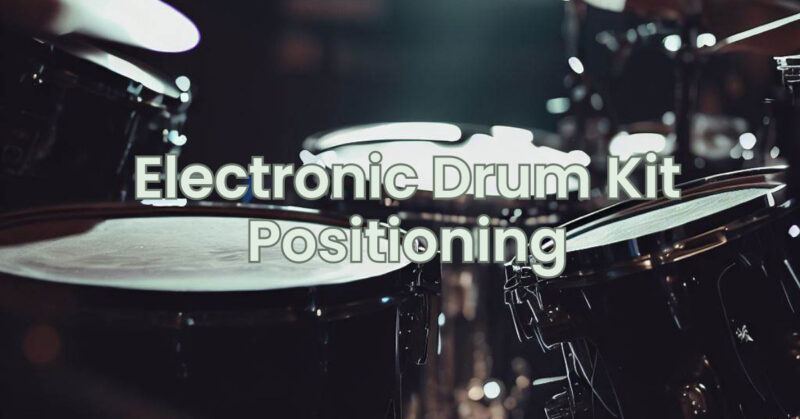Setting up your electronic drum kit properly is crucial for achieving optimal playability, comfort, and overall performance. Whether you’re a beginner or an experienced drummer, understanding the principles of electronic drum kit positioning will help you maximize the benefits of your instrument. In this guide, we’ll walk you through the key considerations for positioning your electronic drum kit.
- Choose a Suitable Space: Select a space in your home or studio that provides enough room to set up your electronic drum kit comfortably. Ensure there’s ample space for you to move around the kit without feeling cramped. Consider the size and dimensions of the room, as well as any acoustic treatments or soundproofing measures you may have in place.
- Adjust Your Throne or Stool: Start by adjusting the height of your drum throne or stool. Aim for a position where your thighs are parallel to the floor when sitting. This will allow for proper leg and foot positioning and help prevent strain or discomfort during extended playing sessions.
- Position the Main Module: The main module or control unit of your electronic drum kit is where you control settings, access sounds, and make adjustments. Place it within easy reach, typically within arm’s length, so you can navigate the controls comfortably while playing. Consider placing the module slightly angled towards you for better visibility and access.
- Arrange the Drum Pads: The drum pads should be positioned to mimic the placement of acoustic drums as closely as possible. The snare pad is usually placed directly in front of you, at a height and angle that feels natural for your playing style. Place the tom pads to the right and/or left of the snare pad, aligning them with your natural arm reach. Adjust the pad heights and angles to match your preferred drumming technique.
- Position the Cymbal Pads: Place the cymbal pads within easy reach and at heights that are comfortable for your playing style. The hi-hat pad should be positioned to your left, aligned with your left foot for convenient foot control. The crash and ride cymbal pads can be placed to your right, mimicking their acoustic counterparts’ placement. Experiment with different angles and positions to find what feels most natural and comfortable for you.
- Consider Ergonomics: Take into account ergonomic principles when positioning your electronic drum kit. Aim for a setup that allows for a relaxed and neutral playing posture. Avoid extreme reaches or angles that could cause strain or discomfort. Your arms and wrists should be positioned naturally, with minimal tension or awkward movements.
- Cable Management: Pay attention to cable management to keep your setup clean and organized. Use cable clips, ties, or Velcro straps to secure the cables neatly along the rack or stand. Avoid placing cables where they can interfere with your playing or accidentally get pulled during a performance.
- Monitor Placement: If you’re using headphones or external speakers, position them strategically to optimize your listening experience. Place your headphones within easy reach, ensuring the cable doesn’t obstruct your movements. For external speakers, position them at ear level or slightly above to help project the sound directly towards you.
- Customize for Your Preferences: Every drummer has unique preferences and playing styles. Feel free to make adjustments and customize the positioning of your electronic drum kit to suit your needs. Experiment with different setups, pad positions, and angles until you find what feels most comfortable and allows for effortless playing.
- Test and Refine: Once you’ve set up your electronic drum kit, take the time to play and test its functionality. Pay attention to your comfort, reach, and overall playing experience. Make any necessary adjustments to pad positions, angles, or heights to achieve optimal playability and performance.
Remember, electronic drum kit positioning is a personal preference, and there is no one-size-fits-all solution. Experiment with different setups and configurations to find what works best for you. By considering ergonomics, comfort, and your playing style, you’ll be able to create an ideal setup that enhances your drumming experience and allows you to unleash your creativity.


